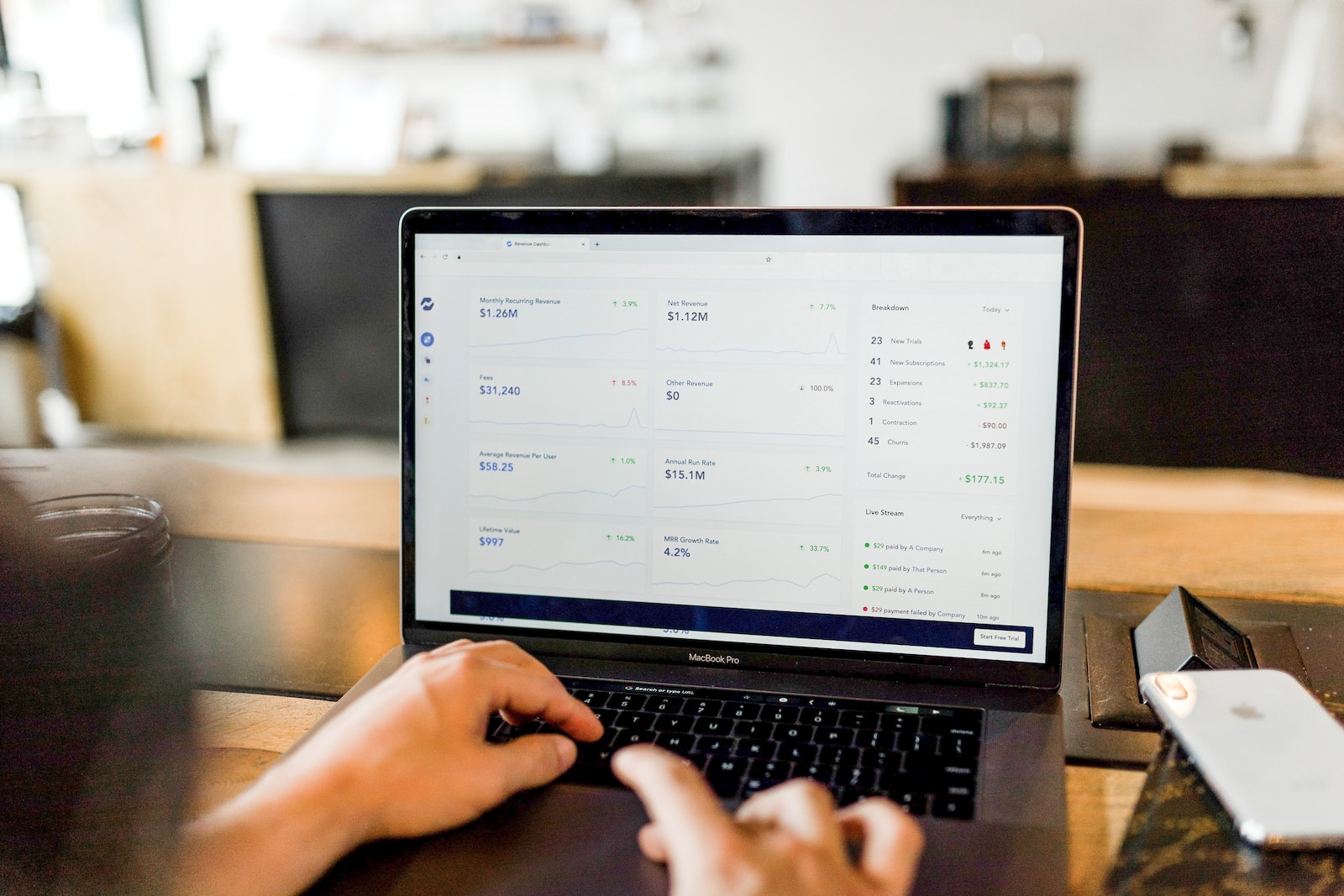In the age of digital advertising, personalized ads have become essential to any successful campaign. Dynamic remarketing takes personalization to the next level by showing visitors ads specifically tailored to their interests and behavior on your website. Using visitor-specific data, dynamic remarketingallows you to create a more relevant and engaging advertising experience for your audience. This powerful advertising strategy not only increases the chances of clicks, but also improves the chances of conversion. In this article, we’ll explain what dynamic remarketing is, how it works, and how you can incorporate it into your advertising strategy to improve your ad personalization and drive more conversions.
Introducing dynamic remarketing
Dynamic remarketing is a powerful advertising technique that allows businesses to serve personalized ads to visitors who have previously interacted with their website or mobile app. This technique takes remarketing to the next level by tailoring ads to each visitor’s specific interests and behavior.
By creating visitor-specific advertisements, businesses can increase their chances of converting those visitors into customers. For example, if a visitor viewed a particular product on a website or added it to their cart but did not complete the purchase, dynamic remarketing might show them an ad for that particular product, along with a personalized message and a call to action to complete their purchase.
Dynamic remarketing works by using data collected from a visitor’s previous interactions with a website or app, such as the pages they’ve viewed, the products they’ve added to their cart, and the searches they’ve done. carried out. This data is then used to create personalized advertisements that are more relevant and attractive to the visitor.
Overall, dynamic remarketing is a powerful tool for businesses that want to improve their ad personalization and conversion rates. By serving personalized ads to visitors who have already shown interest in their products or services, businesses can improve their chances of converting those visitors into repeat customers.
The difference between standard remarketing and dynamic remarketing
Remarketing is a great way to target customers who have already interacted with your brand, but there are two types of remarketing: standard remarketing and dynamic remarketing. Standard remarketing involves showing the same ad to everyone who has visited your website, regardless of their behavior on your site. This is a useful tactic for overall brand awareness, but it may not be effective in convincing customers to come back and make a purchase.
Dynamic remarketing, on the other hand, is a more personalized approach. This involves serving specific advertisements to visitors based on their behavior on your website. For example, if a customer viewed a specific product but didn’t make a purchase, dynamic remarketing might show them an ad featuring that product, possibly with a discount or promotion to entice them to complete the purchase. This personalized approach can be much more effective in increasing conversions and driving sales.
Dynamic remarketing requires a bit more setup than standard remarketing because you’ll need to create specific ads for each product or service you offer. However, the results can be worth it. By showing visitors ads tailored to their interests and behavior, you can create a more engaging and effective advertising campaign that drives sales and builds customer loyalty.
Benefits of dynamic remarketing
Dynamic remarketing offers many benefits to businesses, especially those operating in the e-commerce industry. First, it allows businesses to create highly personalized advertisements tailored to the specific interests and behaviors of their website visitors. This is essential to capture the attention of potential customers and encourage them to make a purchase.
Next, dynamic remarketing helps businesses increase their return on investment (ROI) by targeting users who have already shown interest in their products or services. This not only increases the chances of converting these users into customers, but also helps reduce advertising costs by eliminating irrelevant ad impressions.
Another benefit of dynamic remarketing is that it allows businesses to create highly targeted campaigns tailored to specific audience segments. By leveraging user data such as demographics, past purchases, and browsing behavior, businesses can create targeted campaigns that are more likely to resonate with their audience.
Finally, dynamic remarketing is a highly scalable advertising solution that can be easily integrated into a company’s existing marketing strategy. With the ability to easily create and manage advertising campaigns, businesses can quickly test and optimize their campaigns to ensure maximum effectiveness and return on investment. Overall, dynamic remarketing is a powerful tool that can help businesses improve the personalization of their advertisements and increase their chances of success in the competitive world of online advertising .
How dynamic remarketing works
Dynamic remarketing is a powerful tool that allows you to deliver personalized ads to visitors who have already shown interest in your products or services. It works by tracking user behavior on your website and then using that data to create specific advertisements tailored to their preferences and interests. For example, if a user visited your website and viewed a specific product, dynamic remarketing will allow you to show ads specifically featuring that product.
This level of personalization is incredibly effective, as it allows you to reconnect with users who have already shown an interest in your brand and present them with content more relevant to their needs. Additionally, dynamic remarketing can be used across many channels, including social media platforms and Google Ads, making it a versatile tool to supercharge your ad personalization efforts.
To set up dynamic remarketing, you need to install a tracking tag on your website, which will allow you to collect user behavior data. Once you have this data, you can create ad templates that will dynamically populate with product information based on user behavior. This process can be automated, making it a very efficient and scalable way to personalize your advertising efforts. In summary, dynamic remarketing is an essential tool for any business that wants to improve the personalization of its advertisements and increase its conversion rates.
Setting up dynamic remarketing for your website
Dynamic remarketing is a powerful tool for businesses that want to increase the personalization of their ads and improve their overall advertising strategy. Setting up dynamic remarketing on your website can be done in a few simple steps.
First, you need to make sure that the Google Ads remarketing tag is installed on your website. This tag will allow Google to track visitors and their behavior on your website.
Next, you need to create a product feed containing all the necessary information about your products, such as their names, descriptions, images, and prices. This product feed will be used to create personalized advertisements tailored to the interests and behavior of each visitor to your website.
Once you’ve set up your product feed, you can create dynamic remarketing campaigns in Google Ads, which will automatically generate ads for each visitor based on their previous interactions with your website.
It is important to note that setting up dynamic remarketing requires technical knowledge and expertise. It is therefore recommended that you hire a digital marketing agency or a Google Ads specialist to make sure everything is set up correctly and your campaigns are optimized for success.
Overall, dynamic remarketing is a powerful advertising tool that can help businesses improve the personalization of their ads and drive more conversions from their website visitors. By following these simple steps, you can set up Dynamic Remarketing on your website and start enjoying the benefits of personalized advertising today.
Dynamic Remarketing Best Practices
Let’s take a look at some of the best practices for dynamic remarketing. First, you need to make sure you have all the data you need for dynamic remarketing to work effectively. This means you need to have a complete understanding of your website visitors, including their demographics, browsing behavior, and purchase history. You can use Google Analytics to collect this data and then turn it into actionable insights to optimize your dynamic remarketing campaigns.
Next, you need to make sure your remarketing ads are visually appealing and appealing. Use high-quality images and engaging text to grab your visitors’ attention and encourage them to click through to your website.
Third, make sure you segment your audience effectively. This involves dividing your visitors into different categories based on their browsing behavior and purchase history. You can then create targeted ads specific to each segment, making your dynamic remarketing campaigns more effective.
Finally, make sure your dynamic remarketing campaigns are fully integrated into your overall marketing strategy. This means making sure your ads are consistent with your brand message and image, and aligned with your overall business goals.
By following these dynamic remarketing best practices, you can improve your ad personalization and increase your chances of converting your website visitors into loyal customers.
Case studies of successful dynamic remarketing campaigns
Let’s take a look at some successful case studies of dynamic remarketing campaigns. One of the most notable examples is that of AirBnB. By using dynamic remarketing, they were able to increase their click-through rate by 300% and reduce their cost per acquisition by 31%. How did they do it? By serving personalized ads based on users’ search history, AirBnB was able to show visitors the exact properties they had viewed on its website, which made ads more relevant and increased the chance of converting the customer. visitor in reservation.
Another example is Adidas, which used dynamic remarketing to target users who had abandoned items in their cart. By serving personalized ads reminding the user of forgotten items, Adidas was able to increase their conversion rate by 5.5 times.
Finally, let’s look at the case of eBay, which used dynamic remarketing to show users ads for products they had previously viewed on the eBay app. In doing so, eBay saw a 50% increase in click-through rate and 34% increase in conversion rate.
These case studies prove that dynamic remarketing is a powerful tool to boost ad personalization and improve conversion rates. By serving personalized ads to visitors based on their preferences and behavior, businesses can increase their return on investment and generate more sales.
In conclusion, dynamic remarketing is an effective strategy to improve the personalization of your ads and increase conversion rates. By displaying specific advertisements tailored to a visitor’s browsing history and behavior on your website, you increase the likelihood that they will return to your site and make a purchase. However, dynamic remarketing requires careful planning and execution to be successful. With the tips and strategies in this blog post, we hope you gain a better understanding of dynamic remarketing and how to implement it to improve your ad targeting and drive more sales. Let’s start by creating personalized ads!
Why is it important to personalize dynamic remarketing ads?
Can personalized dynamic remarketing ads be targeted to specific audiences?
How do I customize dynamic remarketing ads for my e-commerce business?
What metrics should I monitor to gauge the success of my personalized dynamic remarketing ads?
How often should I update my dynamic remarketing ads?
What are some creative ways to personalize dynamic remarketing ads?










